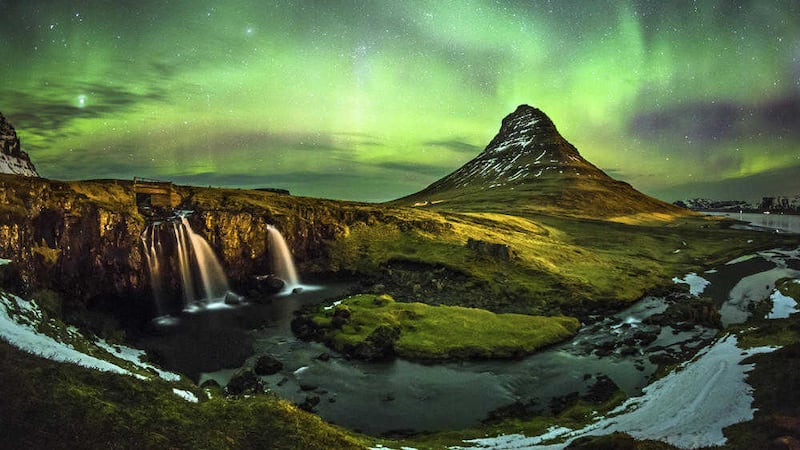ON SATURDAY night the aurora borealis was like a greenish-white haze over the skies of Co Monaghan, eerie and spectral but no stunning pulses of colour.
Others were more fortunate and there were apparently spectacular sightings earlier that week as the Northern Lights danced as far south as Co Cork.
In January last year I spent one of the coldest nights of my life standing on a mountain in Iceland and later by the sea. It was minus-10 degrees, probably minus-20 with the wind-chill factor. But stubbornly I stood on, my sturdy Irish winter wear failing miserably to generate any sort of heat.
Was it worth it to see the aurora? No, not really. It didn’t make an appearance and the display on a mild March night in Monaghan was more impressive, but the sense of adventure in Iceland has stayed with me and I would do it again, just maybe wear a better coat the next time.
The lights in the sky have fascinated humans since the earliest of times and their significance is deeply embedded in our collective psyches, with stars, the moon and the sun becoming identified with deities.
It is not hard to see how this came about, with the sun in particular dictating the times for planting, times of harvests and bringing heat after the dark months of winter.
This week the new life of spring was already evident. Walking on a country road I could see the first tips of green starting to peek through on branches of whitethorns, like probes sent out to check the temperature and see what the weather was like.
The black knuckled pods on the branches of an ash tree were still tightly closed, but they are one of the last to unclench and release their leaves and it could be another few weeks before their skeletal branches are covered in green again.
This coming week will bring other displays of sunlight to a number of locations throughout Ireland. At the hilltop passage tomb at Loughcrew in Co Meath, clouds permitting, the morning sun will shine directly into its inner chamber to illuminate the carvings inside.
Although not as large as nearby Newgrange, with which it is believed to share a common heritage, the spring and autumn equinoxes at Loughcrew are just as stunning, and you don’t need to win a lottery to witness them.
The cairn is believed to be well over 5,000 years old and its builders were clearly keen observers of the seasons and skilled architects to ensure that the passage tomb receives the first rays of the sun as it rises over the horizon on the dates when the hours of day and night are exactly the same .
Loughcrew is located between Kells and Oldacstle and can be reached from a small car park at the foot of the hill. The 20-minute climb over rough ground is not too challenging, but it is steep and the grass can be slippy with dew in the early morning.
Presumably the chamber was linked to ceremonies to celebrate the new life brought by the warmer days of spring and, in September, to mark the end of the cycle.
The carvings on the walls of the inner chamber are mind-blowing – floral patterns, symbolic representations of the sun and stars and perhaps even the nearby River Boyne.
Any meaning that they may have had is long lost to us, but the primal beauty of the chamber bathed in a reddish hue as the first ray of light probes inside is as intense today as it must have been for our ancient ancestors.



